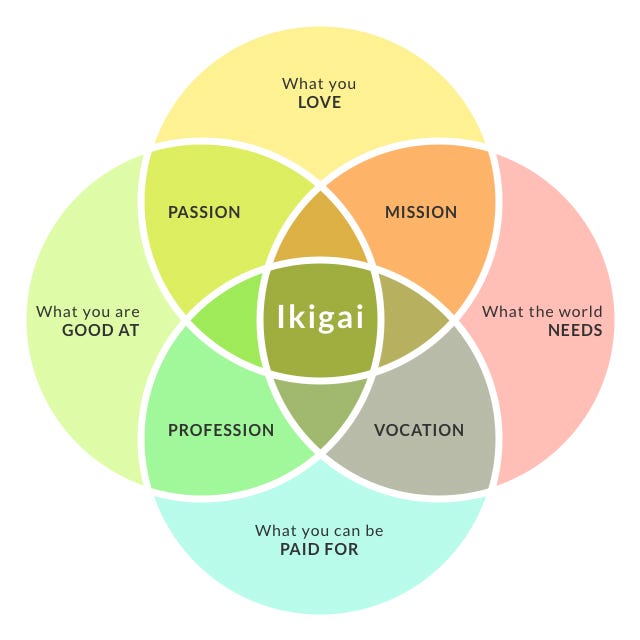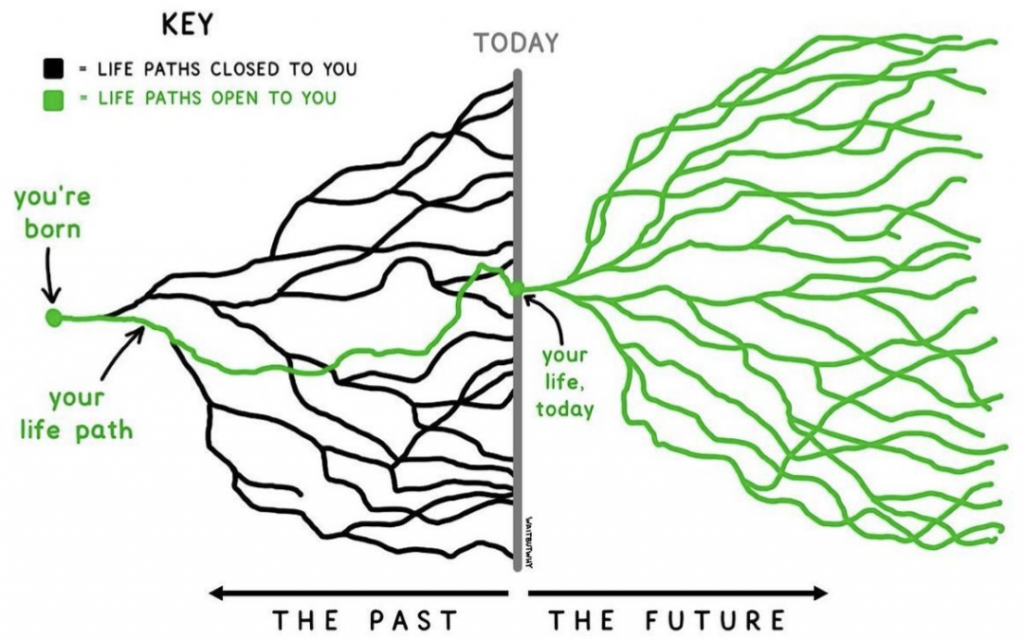
It’s May 2023, the New Year is in full swing, and you might be wondering if this blog, just like many others out there, has been written by any AI or not 🤖 (I promise it hasn’t *bip*bop*)
It’s an exciting yet uncertain time in the Tech world, with many facing challenges with their current role as seemingly overnight the job market turned from talent-ruled to company-driven.
Having worked for 5 different Tech companies over the past 10 years, I’ve had the fortune of working in several different roles, experiencing the highs and the lows and everything in between. The goal of this blog is to help folks organise their minds when faced with the sometimes overwhelming task of looking at new opportunities, sharing what things helped me in my own journey that others can pick up on and inform their own strategies when figuring out their next steps.
I’ve also built a one-pager resource containing all these concepts, you can get it by keeping in touch with my blog.
Ever since we were little we’ve been asked what we want to do when we grow up, and some of us have always had a firm and clear answer, but I think I speak for most of us when I say it’s a constant discovery, it’s always evolving and not really defined. Nowadays we have so many opportunities in terms of what type of job we want to do, and on top of that new types of jobs are constantly being created, especially in tech, so choosing your next step can be very overwhelming.
Ultimately I believe what we can do to help is to try to understand ourselves, our strengths and weaknesses, and align that with the direction we choose to go in.. Some might call it finding your IKIGAI, which is a Japanese term to represent that balance is found at the intersection where your passions and talents converge with the things that the world needs and is willing to pay for.

Figuring that out is a whole journey in itself. It takes time, experience and mindfulness, and I believe it can shift and change with time.
A great way to help you figure out what you enjoy the most is to reflect on your current and past work and relate each aspect to Hot and Cold activities. What are the workstreams/activities that energise you, and which ones drain your energy? Try this exercise: create a table with 3 columns entitled Cold, Warm and Hot. Now reflect on and note down what things completely take away your energies (Cold), what you can justo and go by (Warm), and which ones get you excited (Hot).
When looking for new opportunities, what I often see being overlooked is the option to stay at your current company but find a different role. This should be always considered, as whenever the reason for change – whether it’s that the team isn’t the right fit for you or the learning curve has reached a plateau – changing teams within the same company could make for an easier transition with many benefits. Staying in the same company might come with retained know-how that will help bring you success in the new role, better chances for quicker promotions in future, the opportunity to keep working with trusted allies, and less stress to deal with overall.
It’s easy, and usually the default, to assume the change you’re after can only be found by switching companies, , but remember that your chance to shine and enjoy your job might be closer than you think!
There are obviously scenarios when it’s just best to look for something elsewhere, maybe completely different, and for that we have today one of the most useful tools to help us: LinkedIn. This platform is not only great for job-seekers, but also for companies who compete to attract the best talent.
Here are some things I’d consider doing on LinkedIn if you’re looking for new opportunities:
If stage fright is a thing, so is interview fright! But what do both have in common? They can be tamed and beaten with preparation. You want to give yourself the best chance, and for that, preparation is key!
Here’s what I often suggest to do before an interview:
Every decision we take in life has the power to both close off some paths as well as open countless others. I love this representation by wait but why blog.

Making a decision once one or more job offers are presented to us is surely not the easiest part of this process, and so it shouldn’t be taken lightly! It’s normal to experience doubtful thoughts amongst excitement, as well as fear and anxiety, so be kind to yourself.
Here are some things to consider when approaching making such a decision:
Don’t overlook the financials. Tithout getting into too much detail, good negotiations are key. I personally recommend researching average salary for role, industry and location on either glassdoor or levels.fyi.
Change is constant and should be embraced, and there’s no such thing as taking no risks really. With that being said it’s important to keep in mind that it can be a difficult process, at times uncomfortable, so remember to be kind to yourself.
If you or someone you know are currently looking for a new role I hope this can help and wish you all the best, and do reach out if I can help!